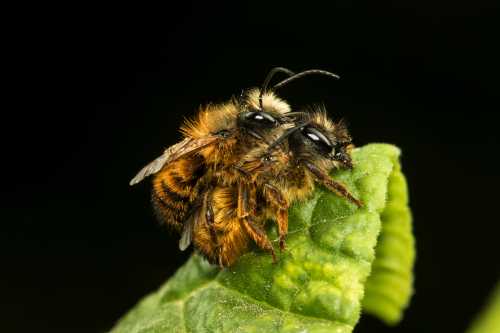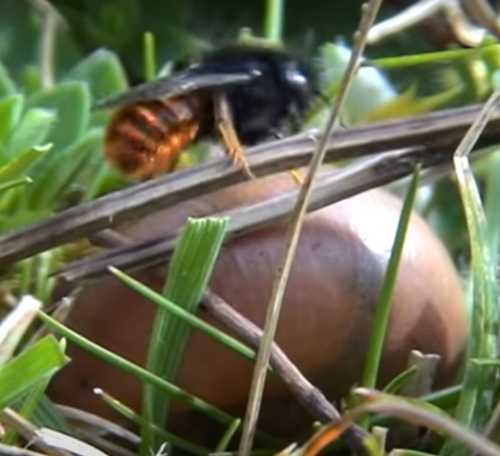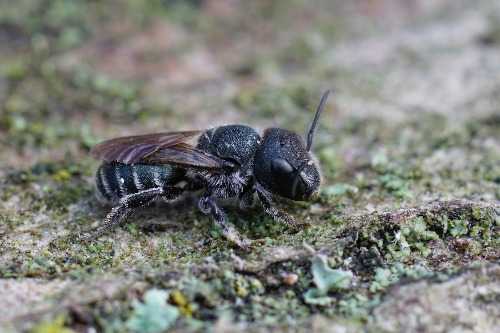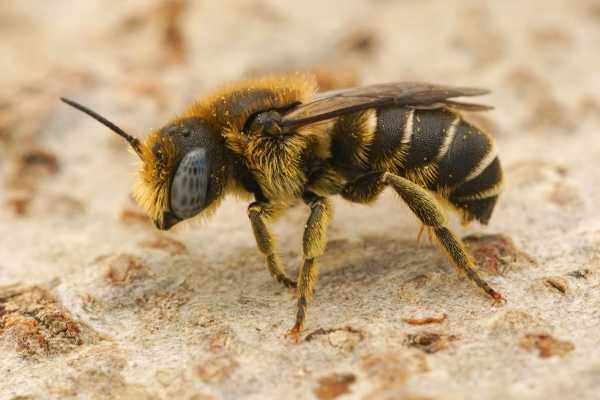Osmia - Mason Bees
Approximately 500 species of Osmia - Mason bees have been identified around the world, with more than 130 species found in the US and Canada - some of these species are found in vibrant metallic blues and greens. There are 12 Osmia species in Britain.
Below you can read about the mason bee group, or scroll down the page to read about specific species.
About Osmia - Mason Bees
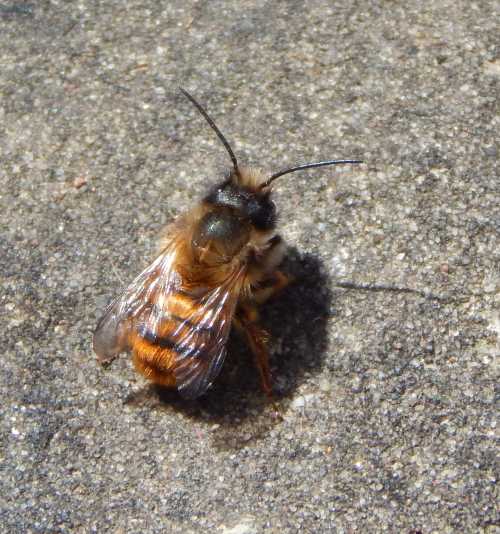 The Red Mason Bee - Osmia bicornis a female.
The Red Mason Bee - Osmia bicornis a female.Mason bees are so-called, because they commonly use mud in the construction of their nests, however, it is actually the common substitute name used to describe bees belonging to the genus ‘Osmia’ which are part of the family ‘Megachilidae’.
Osmia means 'odor', and actually refers to a faint lemony scent used by these bees to mark their nest entrances. It is believed that each individual Osmia produces a unique scent of its own!
How do we know?
In an experiment using straw nest inserts inside a block of wood, it was found
that once bees had begun building nest cells inside the straws, each individual
bee correctly located her own straw even when it was moved from its original
place!
Mason bees are a solitary species and are non-aggressive.
Mason Bee Nests
Osmia are cavity nesting bees. The females make their nests in existing cracks and crevices in walls, but they also favour hollow plant stems.
Each nest cells is provisioned with pollen and contains one egg which will develop into a larva that looks a little like a pale grub.
 Nest cells and larvae of the blue orchard bee - Osmia lignaria with food provision (pollen) inside each nest cell.
Nest cells and larvae of the blue orchard bee - Osmia lignaria with food provision (pollen) inside each nest cell.Some mason bee species make use of empty snail shells - read about the Red-tailed mason bee, Osmia bicolor.
Mason bees may also take up residence in holes created by other wood-boring insects. They they are unlikely to cause any damage where their nests are made.
Pollination and mason bees
Mason bees are a friend to gardeners and farmers, and may be used alongside honey bees for pollinating crops.
Mason bees as a group are super efficient pollinators. Increasingly, as with bumble bees, mason bees are being reared commercially, especially for fruit crop pollination.
Did you
know?
It takes Osmia Lignaria - the Blue Orchard Mason bee, 15 to 35 trips and around 75 flower visits each trip (that's up to 1875 individual flower visits) to provide sufficient pollen for one egg1.
In the Americas, the 'Orchard Mason Bee', Osmia lignaria -
has been found to significantly improve cherry crop yield, even greater
than honey bee
colonies 2.
Mason bee houses
Mason bee houses can be purchased, or you can make your own using hollow canes or holes drilled into wood. It's a good idea to ensure (whether purchased or home made) that it has the following features:
1. Robustness
A flimsy bee house may become easily damaged, and so will not protect the nest cells, eggs and larvae inside.
2. Made of wood
Ensure untreated wood is used. Do not use glass or plastic as these materials may help to encourage the growth of bacteria and fungi.
3. Hygiene
Pollen mites can be a problem for mason bees, and can infest nests. Ensure you provide replaceable cardboard inserts for the bee house, and carefully follow the instructions. If you feel you could not make a commitment to replace tubes, it may be better to simply leave natural hollow plant stems in your garden, and allow nature to take its course.
4. Hole size
Holes need to be about 6mm to a maximum 1cm in diameter, and about 15cm in depth.
Read about Osmia species
References:
1. Bosch J, Kemp WP. 2001. How to manage the blue orchard
bee. Sustainable Agricultural Network, Beltsville Maryland.
98 pp.
2. Bee Population Returns and Cherry Yields in an Orchard Pollinated with Osmia lignaria (Hymenoptera: Megachilidae)
Jordi Bosch, William P. Kemp, and Glen E. Trostle
Journal of Economic Entomology Apr 2006 : Vol. 99, Issue 2, pg(s) 408- 413
If you found this page helpful or interesting, I'd really be grateful if you would share it with others - if not this page, perhaps another, such as Gardening For Bees.
Thank you so much :) .
